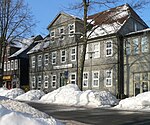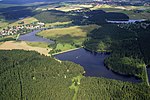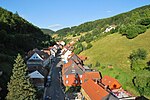Clausthal University of Technology

The Clausthal University of Technology (German: Technische Universität Clausthal, also referred to as TU Clausthal or TUC) is an institute of technology (Technische Universität) in Clausthal-Zellerfeld, Lower Saxony, Germany. The small public university is regularly ranked among the Top German universities in engineering by CHE University Rankings. More than 30% of students and 20% of academic staff come from abroad, making it one of the most international universities in Germany. The university is best known for the prominent corporate leaders among its former students. As of 2011, five of the 30 leading companies within the German stock index had alumni of TUC on their management board, with two of them as CEO.
Excerpt from the Wikipedia article Clausthal University of Technology (License: CC BY-SA 3.0, Authors, Images).Clausthal University of Technology
Graupenstraße,
Geographical coordinates (GPS) Address Nearby Places Show on map
Geographical coordinates (GPS)
| Latitude | Longitude |
|---|---|
| N 51.804722222222 ° | E 10.334444444444 ° |
Address
Graupenstraße
38678 , Clausthal (Clausthal-Zellerfeld)
Lower Saxony, Germany
Open on Google Maps










